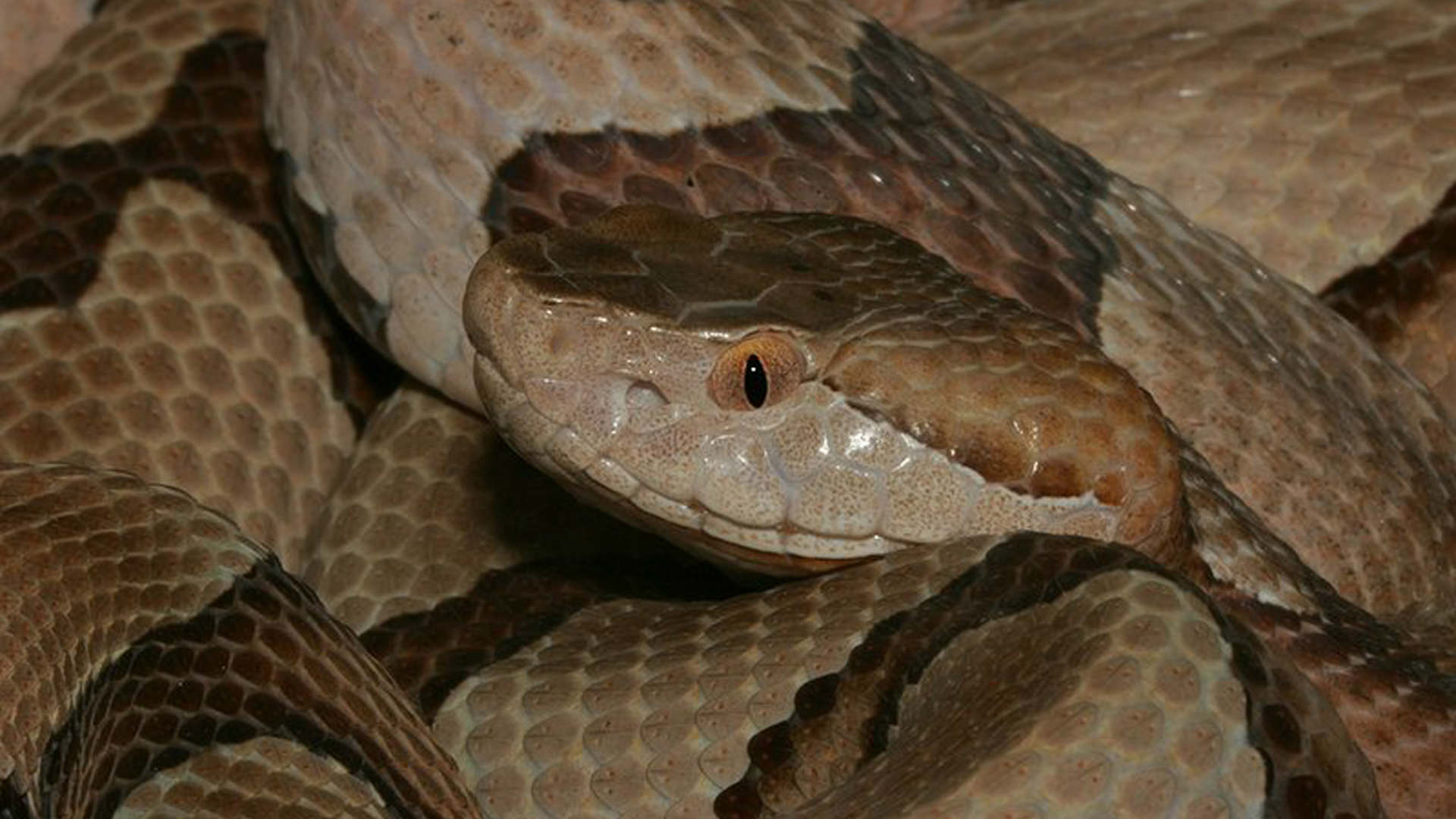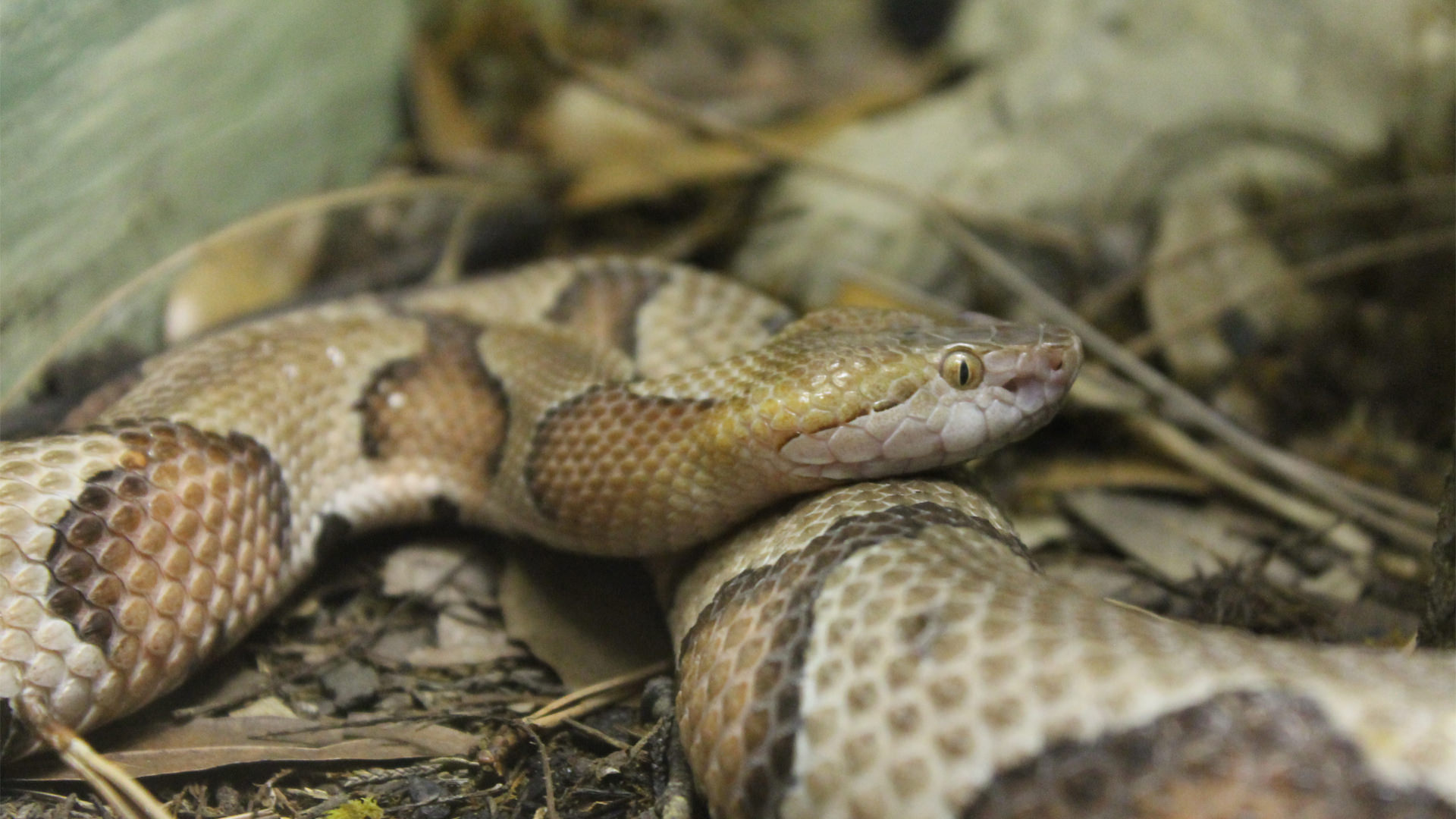
Southern copperheads are social snakes and may hibernate in a communal den with other copperheads or other species of snake. In the Zoo's Herpetarium, we have a southern copperhead and timber rattlesnake that cohabitat, a potential occurrence in southeastern United States.
This snake has a distinctive reddish-brown body with a cross band pattern of tan, copper and brown colors. They are heavy bodied snakes. Their head is distinct from the rest of the body as it is a solid rich brown color.Although copperheads are venomous, their venom is somewhat mild compared to other snake species and is usually not fatal to healthy human adults. Juveniles are grayer in color and have a yellow tinted tail tip until the age of 3 to 4 years. The tinted tail lures small prey by mimicking caterpillar movements. Juveniles and adults have fully functioning fangs that can deliver proportionately equal amounts of venom to their prey.

Copperheads have some of the best camouflage of any North American snake. This snake's venom is being used in studies for potentially treating breast cancer.

Andrea
The facial pits located on either side of their face detect extremely subtle differences in temperature, allowing the snake to determine the direction from where the heat source originates.
Southeastern United States
Forests, woodlands, swamps, caves, suburban areas
76 cm. in length
Rodents, frogs and lizards, bird
Birds of prey, opossums, coyotes, other snakes
Camouflage, rattlesnake mimicry
1–21 per clutch
Least concern
15 years

